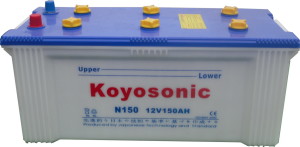How Car Batteries Work
The vast majority of car batteries are part of the lead-acid battery group, where they fall into the SLI category. SLI stands for ‘starting-lighting-ignition’ – a reference to what the device is responsible for within a vehicle; in other words, it not only powers the car’s starter motor but the ignition and lighting systems too.
SLI batteries constitute six galvanic cells laid out in series. Each cell delivers 2.1 volts of electromotive force that, when combined, produce a 12.6-volt SLI battery (commonly advertised as 12-volt). One of these 12-volt batteries is powerful enough to keep a car’s systems running for years, though larger diesel vehicles may employ two.
Each galvanic cell consists of a series of lead and lead dioxide plates which are submerged in an electrolyte solution – a mix of sulphuric acid (35 per cent) and water (65 per cent). This acidic bath triggers a reaction with the lead dioxide plate (the positive electrode) which produces ions and lead sulphate.
 These sulphuric ions then react with the adjacent lead plates (the negative electrode) to produce hydrogen ions and lead sulphate. This chemical reaction, in turn, generates electrons that can flow out via conductive terminals as electricity to power essential functions.
These sulphuric ions then react with the adjacent lead plates (the negative electrode) to produce hydrogen ions and lead sulphate. This chemical reaction, in turn, generates electrons that can flow out via conductive terminals as electricity to power essential functions.
The reaction is not permanent, with the lead sulphate reforming into lead dioxide and lead when the battery is recharged. Over time, the battery’s efficiency will deplete, with most working optimally for about four years.

